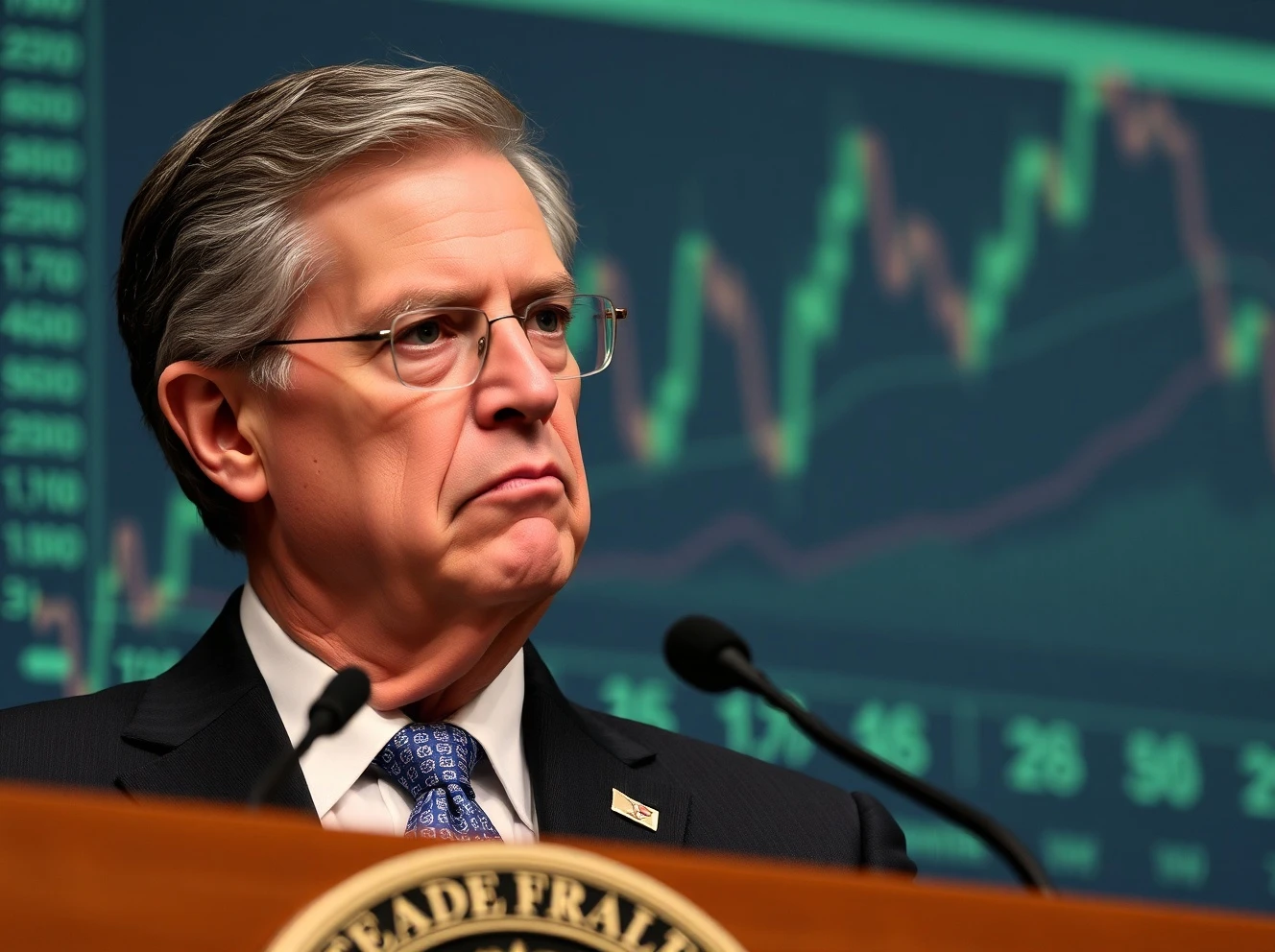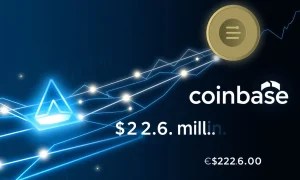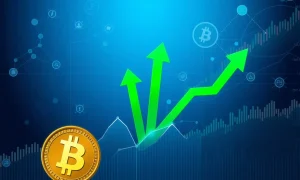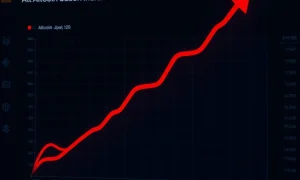Recent statements from Federal Reserve Chair Jerome Powell have ignited intense debate among economists and investors. These comments focus directly on the future trajectory of **Fed interest rate cuts**. Consequently, investors, analysts, and policymakers are all closely scrutinizing the implications. Understanding these expert views is crucial for navigating the current economic climate.
Unpacking Powell’s Latest Remarks on Fed Interest Rate Cuts
Jerome Powell recently addressed the economic landscape. He provided insights into the Federal Reserve’s approach to monetary policy. His statements indicate a cautious and data-driven stance. The central bank prioritizes sustainable inflation and robust employment. This careful approach significantly shapes expectations for future **Fed interest rate cuts**. Powell emphasized the importance of patience. He noted that while inflation has eased, it remains above the Fed’s 2% target. Furthermore, the labor market shows continued strength. These factors suggest the Fed is not rushing into any decisions. They seek greater confidence that inflation is moving sustainably towards its goal before considering adjustments. Therefore, the timing of **Fed interest rate cuts** remains a key discussion point.
The Data-Dependent Approach Guiding Fed Interest Rate Cuts
The Federal Reserve consistently emphasizes economic indicators. Inflation data, employment figures, and growth forecasts guide their monetary strategy. Powell reiterated this commitment. He stressed the need for substantial confidence. The central bank seeks assurance that inflation moves sustainably towards its 2% target. Consequently, any **Fed interest rate cuts** will hinge directly on these incoming metrics. This data-dependent framework is fundamental to their decision-making process. Policymakers meticulously review various economic reports. These include the Consumer Price Index (CPI), Producer Price Index (PPI), and employment reports. Moreover, they analyze consumer spending habits and business investment trends. Each piece of data contributes to a comprehensive economic picture. This thorough evaluation helps the Fed determine the appropriate moment for **Fed interest rate cuts**.
Expert Perspectives on Potential Fed Interest Rate Cuts
Financial experts offer diverse interpretations of Powell’s recent remarks. Many analysts believe **Fed interest rate cuts** are inevitable. However, they disagree significantly on the precise timing. These differing views reflect the complex and evolving economic landscape.
Optimistic Views on Early Fed Interest Rate Cuts
Some economists predict early **Fed interest rate cuts**. They point to several key indicators. For instance, slowing inflation trends provide a strong argument. Furthermore, they highlight a gradually cooling labor market. These factors could prompt the Fed to act sooner than anticipated. Their models often suggest a first cut by mid-year. They believe the Fed risks overtightening if it waits too long. This could potentially trigger an economic downturn. Proponents of early cuts also consider global economic conditions. A global slowdown might pressure the Fed. They argue that proactive cuts could prevent deeper economic woes. This forward-looking approach aims to stabilize financial markets. Ultimately, they see early **Fed interest rate cuts** as a necessary step for sustained growth.
Cautious Forecasts for Delayed Fed Interest Rate Cuts
Other experts advise patience regarding **Fed interest rate cuts**. They cite persistent inflation risks. Geopolitical events also add significant uncertainty to the economic outlook. These analysts expect a later start to the cutting cycle. They project action in the latter half of the year, or even later. They fear that premature cuts could reignite inflationary pressures. This would undo the progress made so far. These cautious voices emphasize the importance of sustained evidence. They want to see several consecutive months of favorable inflation data. Moreover, they monitor wage growth closely. Uncontrolled wage growth could fuel inflation. Therefore, a more conservative approach to **Fed interest rate cuts** is favored. They prioritize long-term price stability over short-term market appeasement.
Divergent Opinions on the Need for Fed Interest Rate Cuts
A third group remains unconvinced of immediate action. They argue the economy remains remarkably resilient. Strong consumer spending supports this view. Businesses also show continued investment. Thus, the Fed may hold rates higher for longer. This strategy could further cement disinflationary trends. They believe the economy can withstand current rate levels without significant harm. These analysts often highlight the ‘higher for longer’ narrative. They suggest that the neutral interest rate might be higher than previously thought. If so, current rates are not overly restrictive. Consequently, the urgency for **Fed interest rate cuts** diminishes. This perspective suggests the Fed has more flexibility. It can wait for undeniable signals before adjusting policy.
Market Reactions and Expectations for Fed Interest Rate Cuts
Financial markets often react swiftly to Fed communications. Powell’s comments sparked noticeable volatility. Bond yields adjusted immediately, reflecting new expectations. Stock futures showed mixed signals. Traders are repricing their expectations for **Fed interest rate cuts**. This repricing directly impacts asset valuations across various sectors. The CME FedWatch Tool provides a real-time gauge of market sentiment. It shows the probability of different rate outcomes at upcoming FOMC meetings. After Powell’s remarks, the probabilities for early cuts often shifted. This tool is widely used by investors. It helps them anticipate potential shifts in monetary policy. Furthermore, it influences their investment strategies regarding **Fed interest rate cuts**. Market participants also closely watch the yield curve. An inverted yield curve often signals an impending recession. The shape of the curve provides clues about future economic growth. Any adjustments to the federal funds rate directly impact short-term yields. This, in turn, influences the entire yield curve. Therefore, market movements offer a clear reflection of expectations surrounding **Fed interest rate cuts**.
Economic Implications of Fed Interest Rate Cuts
Lower interest rates have broad economic effects. They can stimulate borrowing and investment. Businesses may invest more readily in expansion. Consumers might increase spending on large purchases. These actions typically boost economic activity. However, there are also potential downsides to consider.
Addressing Inflationary Pressures with Fed Interest Rate Cuts
Critics warn of renewed inflation if rates are cut too soon. Cutting rates prematurely could reignite price increases. This would reverse the hard-won progress against inflation. The Fed must carefully balance stimulating growth with maintaining price stability. This balancing act is crucial for long-term economic health. The risk of a ‘second wave’ of inflation remains a significant concern for policymakers. Thus, the timing of **Fed interest rate cuts** is paramount. Moreover, inflation expectations play a vital role. If the public expects higher inflation, they may demand higher wages. Businesses might then raise prices. This creates a self-fulfilling prophecy. The Fed works hard to anchor these expectations. Maintaining credibility is essential for managing inflation effectively. Therefore, any move towards **Fed interest rate cuts** must be carefully communicated.
Impact on Employment and Economic Growth
Conversely, **Fed interest rate cuts** could significantly boost employment. They might also support broader economic growth. Lower borrowing costs reduce expenses for businesses. This encourages investment, expansion, and hiring. Consequently, job creation often accelerates. A stronger labor market generally leads to higher consumer confidence and spending. Furthermore, lower rates can reduce the cost of mortgages and other loans. This supports the housing market. It also frees up disposable income for consumers. Such economic stimulus can help avoid a recession. Therefore, the strategic timing of **Fed interest rate cuts** is critical for achieving a ‘soft landing’—reducing inflation without triggering a significant downturn.
The Path Forward for Fed Interest Rate Cuts
The future trajectory of **Fed interest rate cuts** remains uncertain. The Federal Reserve will continue monitoring incoming economic data closely. Upcoming inflation reports are particularly crucial. Employment data also holds significant weight. Policymakers will communicate their decisions clearly and transparently. Transparency is a key principle for maintaining market stability and public trust.
Potential Scenarios for Fed Interest Rate Cuts
Several scenarios could unfold:
- Early Cuts: If inflation cools rapidly and sustainably. This scenario implies a quicker return to the Fed’s target. The economy might show signs of slowing more than anticipated.
- Delayed Cuts: If inflation proves stubborn or reaccelerates. This would force the Fed to maintain higher rates for longer. Economic resilience might allow for this prolonged period.
- No Cuts: If economic growth remains robust and inflation persists at elevated levels. This less likely scenario suggests a significant shift in the Fed’s assessment of the neutral rate.
Each scenario presents unique challenges and opportunities for the economy. The global economic environment also plays a role in these considerations. Ultimately, the Fed aims for a soft landing. This means reducing inflation without triggering a recession. Navigating this path requires careful judgment and adaptability. Powell’s recent remarks underscore the Fed’s careful stance. The prospect of **Fed interest rate cuts** remains a central focus for financial markets. Experts offer varied predictions, reflecting the inherent uncertainties. The market continues to adjust its expectations based on every new piece of information. Future decisions will depend heavily on incoming economic data. Staying informed about these developments is essential for all stakeholders, from individual investors to large corporations.
Frequently Asked Questions (FAQs) about Fed Interest Rate Cuts
What are Fed interest rate cuts?
Fed interest rate cuts refer to the Federal Reserve’s decision to lower the federal funds rate. This benchmark rate influences other interest rates throughout the economy, including those for loans, mortgages, and savings accounts. Lowering this rate typically makes borrowing cheaper and encourages economic activity.
Why is the Fed considering interest rate cuts?
The Fed considers interest rate cuts primarily to stimulate economic growth and prevent a recession. If inflation is under control and the economy shows signs of slowing, lower rates can encourage consumer spending and business investment. This helps maintain a healthy and stable economic environment.
How do experts view Powell’s latest comments on Fed interest rate cuts?
Experts hold diverse views. Some interpret Powell’s comments as a signal for potential early cuts, citing progress on inflation. Others see a cautious approach, suggesting delayed cuts due to persistent inflation risks or a resilient economy. Overall, the consensus is that the Fed will remain data-dependent.
What is the potential impact of Fed interest rate cuts on the economy?
**Fed interest rate cuts** can have several impacts. They typically lower borrowing costs for consumers and businesses, potentially boosting spending and investment. This can stimulate economic growth and employment. However, cutting rates too soon could risk reigniting inflation, which the Fed aims to avoid.
When are Fed interest rate cuts expected?
There is no definitive timeline for **Fed interest rate cuts**. Market expectations and expert predictions vary widely, ranging from mid-year to later in the year, or even no cuts in the near term. The exact timing will depend on incoming economic data, particularly inflation and employment reports, and the Fed’s assessment of these indicators.







